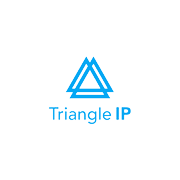We offer two ways to help you understand this query — pick whichever works best for you:
Prefer to watch?
Start with our short walkthrough video that shows you exactly how it works, step by step.
Prefer to read?
Scroll down for the full written guide with screenshots and detailed explanations.
Overview
The Summary section is one of the most important parts of the idea form. It helps reviewers, managers, and patent counsel understand your idea quickly and thoroughly.
A well-written summary increases the likelihood that your idea will be properly evaluated.
What Should You Include in the Summary?
Your idea summary should be clear, concise, and complete. It is the single most important section in communicating the essence and value of your invention.
To help you draft an effective summary, here’s a recommended structure to guide your writing:
1. Problem or Opportunity
- What specific problem does your idea solve?
- Is there a known inefficiency, technical bottleneck, or market gap?
- Why is addressing this problem important to the business or customers?
2. Proposed Solution
- What is your innovation or proposed approach?
- How does the technical solution work at a high level?
- What makes your solution novel, valuable, or more effective than alternatives?
3. Key Benefits / Technical Differentiators
- What are the most significant advantages of your idea over existing solutions?
- Consider benefits such as performance gains, cost savings, user experience, or sustainability.
- Highlight any unique technical elements such as specific algorithms, architectures, or system designs.
4. Competitive Landscape (Prior Art, if known)
- Are there existing products, patents, or known approaches addressing a similar challenge?
- How is your idea different, better, or more defensible from a patent perspective?
5. Target Market / Application Area
- Who does this innovation intend to serve?
- Will it be used internally, by customers, or within a specific product line or market segment?
- What strategic opportunities could this unlock?
6. Feasibility and Implementation Considerations
- Are there any technical, financial, or operational challenges involved?
- What stage is the idea currently in (concept, prototype, production)?
- Are any resources or stakeholder approvals required to move forward?
7. Key Deadlines or Commercial Milestones (if applicable)
- Is the idea tied to an upcoming product launch, investor meeting, regulatory submission, or public disclosure (e.g., conference or publication)?
- Mention any relevant timelines to help your IP team prioritize
| Here is an Example Summary Problem or Opportunity: Current smart home systems are often inefficient in managing energy consumption due to static or rule-based thermostat controls. This leads to increased energy bills and suboptimal comfort for users. Proposed Solution: We propose an AI-based thermostat control system that continuously adapts to user behavior using machine learning models. The system leverages time-series data to dynamically adjust temperature settings in real-time. Key Benefits: This innovation improves energy efficiency by up to 30% compared to traditional systems. It enhances user comfort while reducing operational costs and environmental impact. Target Market / Opportunity: The technology is targeted for integration into our “SmartHomePro” product line, with a commercial launch expected in Q4. It aligns with our sustainability goals and competitive differentiation strategy in the smart home market. Feasibility Considerations: The system is currently in the prototype phase and undergoing performance validation. Implementation would require integration with existing HVAC control hardware and cloud infrastructure for data processing. Competitive Landscape: Known prior art includes Honeywell’s AI thermostat technologies (e.g., US9876543B2). Our solution differs by using predictive multi-zone learning models and continuous feedback loops for autonomous optimization. |
This structure is intended to help you communicate your ideas clearly and efficiently. You can always include more details or additional context as needed.
| Quick Tip: You can also attach supporting documents (e.g., PowerPoint, diagrams) and simply reference them in the summary like:“See attached slide deck for detailed flowchart.” |
For a simple way to ensure all these elements are addressed, refer to the Triangle IP’s Idea Summary Template (below), which mirrors this structure and can streamline your drafting process.
